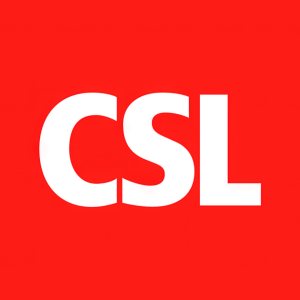New Data Presented at IDWeek 2023 Demonstrates Public Health Benefit and Cost Savings Associated with Cell-Based and Adjuvanted Influenza Vaccines
- Data evaluating the impact of cell-based quadrivalent influenza vaccines suggests an additional
31% –39% of influenza cases may have been prevented among persons 0–64 years of age during the 2017-2020U.S. flu seasons.1 - Vaccination of children 6 months to 17 years of age with cell-based quadrivalent influenza vaccines would be cost-effective in >
95% of simulations, compared to traditional egg-based vaccines based on modeling data from 2011/12 and 2017/18U.S. flu seasons.2 - Influenza vaccination with an adjuvanted quadrivalent influenza vaccine or standard-dose egg-based quadrivalent vaccine significantly reduced cardiovascular, respiratory, and other complications of influenza among
U.S. adults 65 years of age and older over the 2018/19 and 2019/20 influenza seasons.3
SUMMIT, N.J., Oct. 11, 2023 /PRNewswire/ -- CSL Seqirus, a business of CSL (ASX: CSL), today announced new data from three studies supporting the clinical, public health and economic value of both cell-based and adjuvanted seasonal influenza vaccines. The data highlights the effectiveness and value of influenza vaccination in the
Modeling data showed a cell-based quadrivalent (IIV4c) vaccine provided substantial public health benefit compared with an egg-based quadrivalent inactivated influenza vaccine (IIV4).1 It is estimated that use of IIV4c in
In addition, modeling data comparing economic and health impacts of vaccination with a cell-based quadrivalent influenza vaccine (QIVc) to the standard-dose egg-based quadrivalent vaccine (QIVe) in
"By analyzing healthcare and economic data, we can contribute to our understanding of improved vaccine effectiveness of specific influenza vaccines at the population level," said Mendel Haag, Senior Director, Center of Outcomes Research & Epidemiology, CSL Seqirus. "Observing an ever-growing set of real-world outcomes is critical to ensuring that cell-based influenza vaccine technology continues to push public health forward."
A third study examined the impact of vaccination of older
"These studies strengthen the evidence base supporting the effectiveness of our cell-based and adjuvanted influenza vaccines in mitigating the consequences of influenza for health and healthcare systems," said Joaquin Mould-Quevedo, Global Health Economic and Value Strategy Director, CSL Seqirus. "With the 2023/24 Northern Hemisphere influenza season underway, we're committed to working with our partners in public health to help demonstrate the importance of vaccination for our communities and health systems, particularly following a significant drop in flu immunization rates since the COVID-19 pandemic."
About the Studies Presented at IDWeek 2023
Estimated additional burden averted from use of cell-based influenza vaccines compared to egg-based influenza vaccines among people 0–64 years of age in
This study estimated the public health impact of vaccination with a cell-based quadrivalent inactivated influenza vaccine (IIV4c) compared with an egg-based inactivated quadrivalent influenza (IIV4) in all vaccinated people 0–64 years of age across the 2017/18 through 2019/20 influenza seasons in the
The value of the influenza cell-based vaccine in the pediatric population: A dynamic transmission modelling approach in the
A second analysis of cell-based vaccines evaluated the economic and health impacts of the cell-based quadrivalent influenza vaccine (QIVc) compared with the standard-dose egg-based quadrivalent vaccine (QIVe) in
The value of influenza vaccination in the older adult population. A stochastic model estimation of the benefit of vaccination to prevent the severe outcomes in the
Standard-dose egg-based quadrivalent vaccine (QIVe) or an adjuvanted quadrivalent influenza vaccine (aQIV) substantially reduced the estimated incidence of hospitalization and deaths due to influenza complications in this population and incremental differences between the two vaccines estimated further reductions in hospitalizations and deaths from aQIV vs QIVe of 1,071–18,388 and 85–1,944, respectively across the three evaluated outcomes (respiratory illness, cardiovascular disease, and other).3
During the last two recent pre-pandemic seasons (2018/19 and 2019/20), 44–
Study Limitations
As with all simulations, analyses based on models have several limitations based on a model's parameters and available data, as well as annually varying vaccine effectiveness. Modeling may underestimate the true number of cases averted for several reasons. First, the static structure of the first study used does not account for the indirect benefits of vaccination, such as herd immunity and reduction of transmission due to reduction in cases. Additionally, CDC disease burden estimates correspond to the overall population (including both vaccinated and unvaccinated people), which may cause an underestimation of averted cases in the unvaccinated. Additionally, modeling may not capture potential variability between sub-groups where groupings such as age-specific data were not present.
About Seasonal Influenza
Influenza is a common, contagious seasonal respiratory disease that may cause severe illness and life-threatening complications in some people.6 Influenza can lead to clinical symptoms varying from mild to moderate respiratory illness to severe complications, hospitalization and in some cases, death.6 Because transmission of influenza viruses to others may occur one day before symptoms develop and up to 5 to 7 days after becoming sick, the disease can be easily transmitted to others.6 Preliminary estimates from the Centers for Disease Control and Prevention (CDC) report that during the 2022/23 influenza season, there were an estimated 300,000-650,000 influenza-related hospitalizations in the
About CSL Seqirus
CSL Seqirus is part of CSL (ASX:CSL). As one of the largest influenza vaccine providers in the world, CSL Seqirus is a major contributor to the prevention of influenza globally and a transcontinental partner in pandemic preparedness. With state-of-the-art production facilities in the
For more information about CSL Seqirus, visit CSLSeqirus.com.
About CSL
CSL (ASX:CSL) (USOTC:CSLLY) is a global biotechnology company with a dynamic portfolio of lifesaving medicines, including those that treat haemophilia and immune deficiencies, vaccines to prevent influenza, and therapies in iron deficiency and nephrology. Since our start in 1916, we have been driven by our promise to save lives using the latest technologies. Today, CSL – including our three businesses: CSL Behring, CSL Seqirus and CSL Vifor – provides lifesaving products to patients in more than 100 countries and employs 32,000 people. Our unique combination of commercial strength, R&D focus and operational excellence enables us to identify, develop and deliver innovations so our patients can live life to the fullest. For inspiring stories about the promise of biotechnology, visit CSL.com/Vita and follow us on Twitter.com/CSL.
For more information about CSL, visit www.CSL.com.
Intended Audience
This press release is issued from CSL Seqirus in
Forward-Looking Statements
This press release may contain forward-looking statements, including statements regarding future results, performance or achievements. These statements involve known and unknown risks, uncertainties and other factors which may cause our actual results, performance or achievements to be materially different from any future results, performances or achievements expressed or implied by the forward-looking statements. These statements reflect our current views with respect to future events and are based on assumptions and subject to risks and uncertainties. Given these uncertainties, you should not place undue reliance on these forward-looking statements.
MEDIA CONTACT
Tiffany Cody
+1 (908) 370-1863
Tiffany.Cody@Seqirus.com
FLUCELVAX® QUADRIVALENT (Influenza Vaccine)
IMPORTANT SAFETY INFORMATION
What is FLUCELVAX® QUADRIVALENT (Influenza Vaccine)?
FLUCELVAX QUADRIVALENT is a vaccine that helps protect people aged 6 months and older from the flu. Vaccination with FLUCELVAX QUADRIVALENT may not protect all people who receive the vaccine.
Who should not get FLUCELVAX QUADRIVALENT?
You should not get FLUCELVAX QUADRIVALENT if you have had a severe allergic reaction to any of the ingredients in the vaccine.
Before receiving FLUCELVAX QUADRIVALENT, tell your healthcare provider about all medical conditions, including if you:
- Have ever had Gullain-Barré syndrome (severe muscle weakness) within six weeks of getting a flu vaccine. The decision to give FLUCELVAX QUADRIVALENT should be made by your healthcare provider, based on careful consideration of the potential benefits and risks.
- Have problems with your immune system or are taking certain medications that suppress your immune system, as these may reduce your immune response to the vaccine.
- Have ever fainted when receiving a vaccine.
What are the most common side effects of FLUCELVAX QUADRIVALENT?
- Pain, redness, swelling, and/or a raised hardened area where the vaccine was given
- Headache
- Overtiredness with low energy
- Muscle aches
- Feeling unwell (malaise)
Additional side effects seen in children include:
- Tenderness or bruising where vaccine was given
- Sleepiness
- Irritability
- Diarrhea
- Changes in eating habits
These are not all of the possible side effects of FLUCELVAX QUADRIVALENT. You can ask your healthcare provider for more information and for advice about any side effects that concern you.
To report SUSPECTED ADVERSE REACTIONS, contact CSL Seqirus 1-855-358-8966 or VAERS at 1-800-822-7967 or www.vaers.hhs.gov.
You are also encouraged to report negative side effects of prescription drugs to the FDA. Visit www.fda.gov/medwatch or call 1-800-FDA-1088.
Before receiving this vaccine, please see the full US Prescribing Information for FLUCELVAX QUADRIVALENT. The information provided here does not include all that is known about FLUCELVAX QUADRIVALENT. To learn more, talk with your healthcare provider or pharmacist.
FLUCELVAX® QUADRIVALENT is a registered trademark of Seqirus
REFERENCES
1 McGovern I et al. Estimated additional burden averted from use of cell-based influenza vaccines compared to egg-based influenza vaccines among people 0–64 years of age in
2 Mould-Quevedo J, Nguyen V. The value of the influenza cell-based vaccine in the pediatric population: A dynamic transmission modelling approach in the
3 Pelton, S, Nguyen V, Mould-Quevedo J. The value of influenza vaccination in the older adult population. A stochastic model estimation of the benefit of vaccination to prevent the severe outcomes in the
4 Centers for Disease Control and Prevention (CDC). Estimated Flu-Related Illnesses, Medical visits, Hospitalizations, and Deaths in
5 CDC. Estimated Flu-Related Illnesses, Medical visits, Hospitalizations, and Deaths in
6 CDC. (2022). Key Facts about Influenza. Retrieved from https://www.cdc.gov/flu/about/keyfacts.htm. Accessed September 2023.
7 CDC. (2023). 2022-2023 Preliminary In-Season Burden Estimate. Retrieved from: https://www.cdc.gov/flu/about/burden/preliminary-in-season-estimates.htm. Accessed September 2023.
8 CDC. (2023). Who Needs a Flu Vaccine and When. Retrieved from: https://www.cdc.gov/flu/prevent/vaccinations.htm. Accessed September 2023.
SOURCE CSL Seqirus








